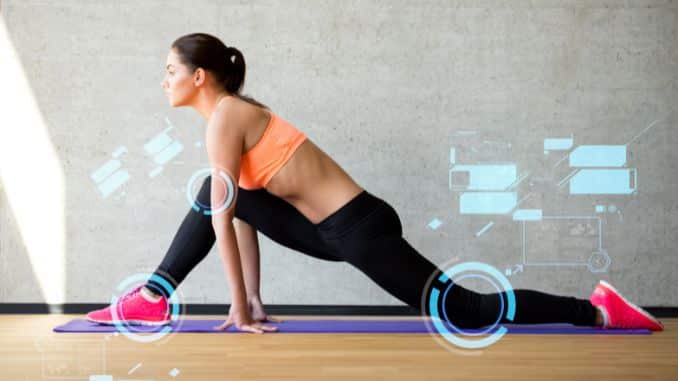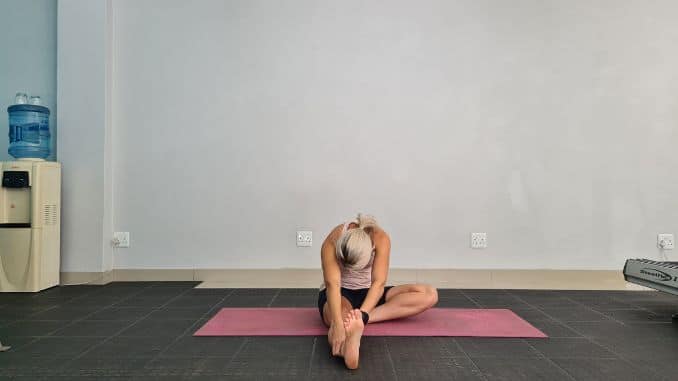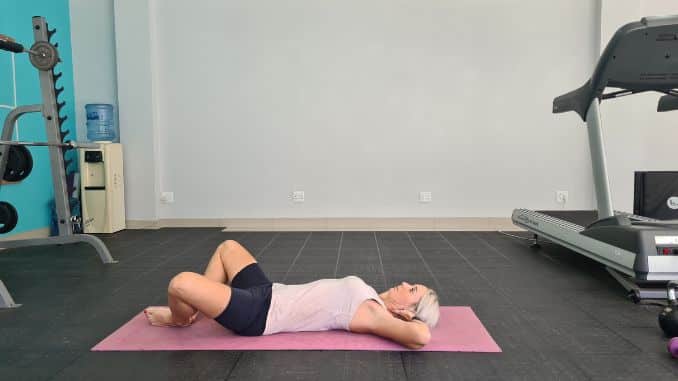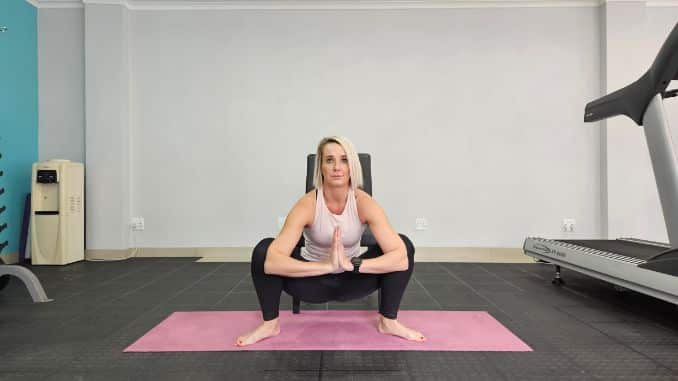The pectineus stretch is a valuable exercise for individuals experiencing discomfort related to the pectineus muscle strain, hip flexor pain, and overall hip discomfort. The pectineus is a rectangular and flat muscle located in the pelvic region, situated deep within the groin area.
When this muscle is strained, it can lead to pectineus muscle pain, contributing to hip pain and limited range of motion.
Understanding the Importance of Stretching

The pectineus muscle is heavily used in exercises that lift the hip and in movements that stabilize the hip during twisting. It’s less active when just turning the hip inward. The piriformis muscle works hardest during exercises that pull the leg outward and rotate it outward while the hip is slightly stretched back. These findings indicate that the pectineus and piriformis muscles are key in stabilizing the hip.
Stretching is essential for overall health and well-being. Here’s why it is important:
1. Flexibility and Range of Motion
Stretching regularly improves flexibility and then allows joints to move freely. Basically, this is essential for daily tasks and can improve sports performance by incorporating a pectineus stretch.
2. Injury Prevention
Flexible muscles are less prone to injury. Stretching reduces muscular imbalances and then improves posture, lowering the chance of strains, sprains, and other ailments.
3. Muscle Recovery
Stretching after a workout helps relax muscles and then it aids in the recuperation process. Furthermore, it can relieve muscle pain and improve the body’s ability to repair and regenerate tissues.
4. Improved Circulation
Stretching improves blood flow to muscles, improving circulation and then providing nutrients and oxygen. This increased circulation reduces muscle fatigue and speeds up waste clearance from the muscles.
5. Stress Reduction
Basically, stretching, including pectineus stretch, promotes relaxation by reducing muscle tension. Moreover, this, in turn, can aid in stress reduction and mood enhancement.
6. Enhanced Posture
Stretching tense muscles, such as the chest and hip flexors, can help improve posture. This is especially crucial in a world where many people spend lengthy periods of time sitting at desks.
7. Improved Coordination and Balance
Increased flexibility and range of motion help with coordination and balance. This is critical for occupations requiring agility and then steadiness.
Anatomy of the Pectineus Muscle
The pectineus muscle, a small muscle in the inner thigh, helps flex the hip by moving the thigh toward the abdomen. It works with other thigh muscles like the adductor longus, brevis, and Magnus to bring the thigh toward the body’s midline and then flex the hip joint.
The pectineus muscle [¹] is involved in hip flexion and stabilization, particularly during movements that require rotational stabilization of the hip. This muscle is moderately activated by rotational movements, not just internal hip rotation.
- Superior Part: The upper part of the pectineus muscle starts from the pectineal line of the pubis, which is a bony ridge on the pelvis.
- Inferior Part: The lower part of the pectineus muscle attaches to the Linea aspera, a ridge on the femur (thigh bone)
- Intermediate Part: Some anatomical references describe an intermediate part of the pectineus muscle between the superior and inferior portions.
What are the Symptoms of a Tight Pectineus?

A tight pectineus muscle [²] can cause various symptoms, including stiffness and potential problems in the inner thigh region.
- Groin Pain: Tightness in the pectineus might lead to groin discomfort, especially when moving the hip or during tasks requiring hip flexion.
- Inner Thigh Stiffness: A tight pectineus might cause stiffness along the inner thigh, possibly limiting the hip joint’s range of motion.
- Reduced Hip Flexibility: Tightness in the pectineus could hinder hip flexion, affecting actions like walking, running, or climbing stairs.
- Pelvic Pain: Tightness in the pectineus could lead to pelvic discomfort during hip-flexion movements.
- Pectineus Strain: The pectineus is part of the adductor muscle group. Tightness in this muscle might contribute to strains or discomfort in the adductors.
- Difficulty with Leg Motions: Tightness in the pectineus could make lateral or rotational leg motions challenging and uncomfortable.
- Lower Back Pain: Tightness in the pectineus could affect pelvic alignment, potentially leading to lower back pain or impacting posture.
- Pain During Exercise: Those with tight muscles might feel pain or discomfort during activities involving the inner thigh muscles, such as certain exercises or sports movements.
Release Tight Pectineus Through These Stretches
1. Seated Pectineus Stretch
Firstly, begin in an upright sitting position on the floor with your legs extended, maintaining good alignment with your head, shoulders, and hips. Engage your core. Bend one knee and bring the sole of that foot against the opposite leg’s inner thigh. Gently lean forward, reaching towards the toes of the extended leg, looking for a light stretch in the inner thigh. After that, hold this position for several deep belly breaths, in through your nose, out through your mouth. Furthermore, repeat the movement.

2. Standing Pectineus Stretch
Begin in an upright standing position with your feet shoulder-width apart, maintaining good alignment with your head, shoulders, hips, and legs. Tighten your core. Step to the side with one leg and then lower your body into a lateral lunge position. Feel the stretch in the inner thigh of your stretched backward leg. Hold this position for several deep belly breaths, in through your nose and out through your mouth. Return to the starting position and then repeat the movement.

3. Lying Adductor Stretch
Lie on your back on the floor with your knees bent and feet flat on the floor. Place your hands behind your head. Engage your core, then open your knees out to the sides, bringing the soles of your feet together. Slowly lower your knees to the floor for a light stretch. Hold the position for several deep belly breaths, in through your nose and then out through your mouth.

4. Deep Squat Stretch
Begin in an upright standing position with your feet wider than shoulder-width apart, maintaining good alignment of your head, shoulders, hips, and legs. Position your heels inward while your toes face outward at a 45-degree angle. Lower your seat into a squat position with your hands together, palms facing each other at your heart center. Push your elbows into your knees and engage your glutes as you push your shoulders down. Hold the position for several deep belly breaths, in through your nose and out through your mouth.

Conclusion
It’s important to deal with tightness in the pectineus muscle to keep your lower body flexible and healthy. Symptoms like muscle strain and hip pain can occur. Regular stretching, self-massage, and proper warm-ups help relax this muscle, making the hip joint more flexible.
This is especially important for activities that involve turning the thigh. A comprehensive approach that includes the abdominal muscles is crucial for good care.
Reclaim Your Flexibility Today! “Unlock Your Hip Flexors and Experience Unmatched Mobility! Click Here to Start Your Journey to Pain-Free Movement!” Get started now and experience the transformation!


